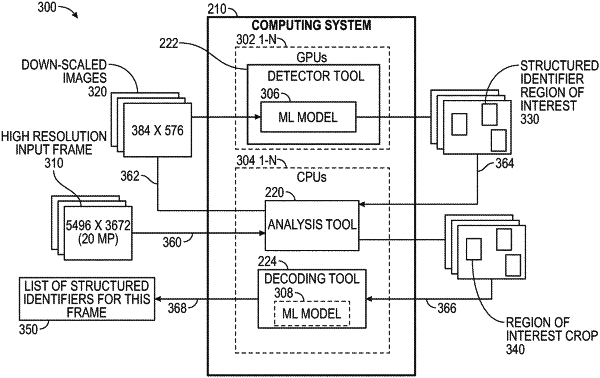| CPC G06V 20/10 (2022.01) [G06F 18/214 (2023.01); G06F 18/253 (2023.01); G06K 7/1413 (2013.01); G06V 10/25 (2022.01); G06V 10/806 (2022.01); G06V 30/00 (2022.01)] | 20 Claims |

|
1. A scan-free reader system, comprising
a plurality of image sensors, each disposed in a different location within an environment to create a scanning volume within the environment; and
a computing system coupled to the plurality of image sensors and configured to:
capture, via the plurality of image sensors, a first plurality of images of an object within the scanning volume, wherein the object is moved through the scanning volume (i) as part of a picking operation or a stowing operation and (ii) without an explicit presentation of a structured identifier on the object to at least one of the plurality of image sensors;
generate a second plurality of images corresponding to the first plurality of images, wherein each of the second plurality of images has a lower quality than a respective one of the first plurality of images;
determine, via a machine learning model, a first region of interest of the structured identifier on the object within a first image of the second plurality of images;
identify, based on the first region of interest, a second region of interest of the structured identifier on the object within a first image of the first plurality of images corresponding to the first image of the second plurality of images;
extract an image of the second region of interest within the first image of the first plurality of images; and
decode the structured identifier within the image of the second region of interest to obtain data corresponding to the structured identifier.
|